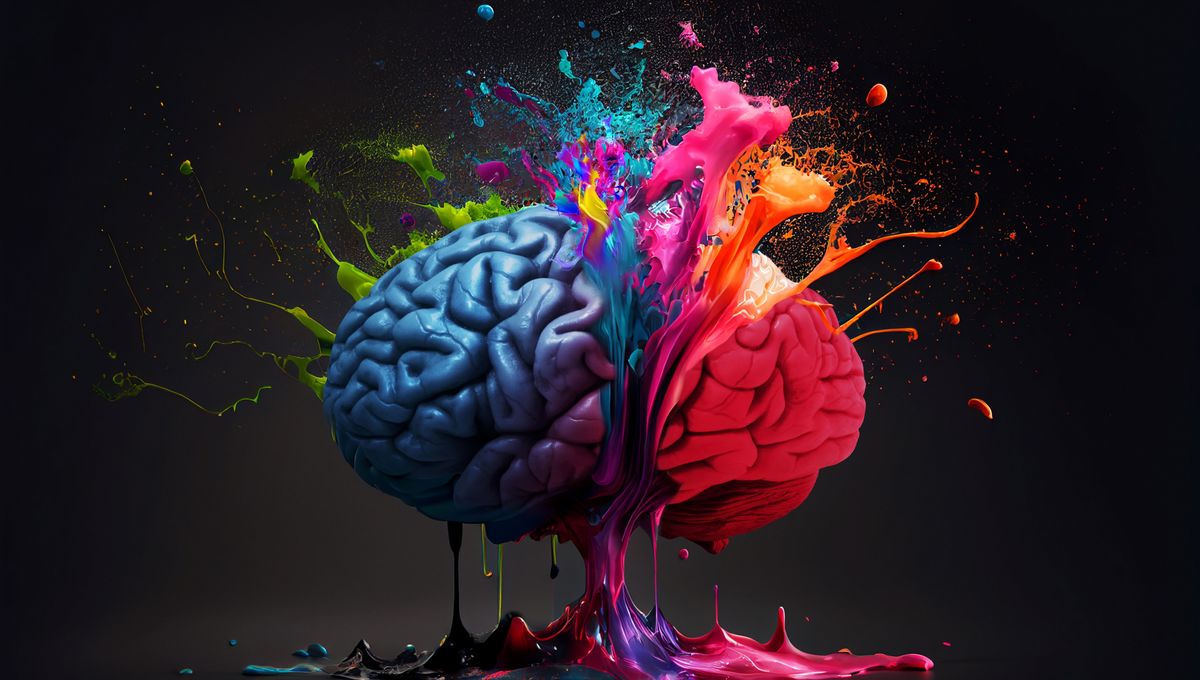
Creativity. We usually associate it with the work of great artists or thinkers: from Beethoven to Einstein, from Picasso to the mastermind that gave us Tiramisu. Creativity is also part of our everyday lives. Every time we make novel associations between concepts, or come up with a new hack to use a straw to hull a strawberry, we are being creative. But where in the brain does creativity come from? A recent study suggests it involves the joint activity of many parts of your brain.
The brain is not just a shapeless blob of cells, but is organized into many interconnected regions. Decades of research have pointed to various functions and roles for all of these: there are areas for visual processing, for motor control, for spatial memory, and so on. Alas, there does not seem to be a brain region for creativity.
The activity of the brain has also been described in terms of networks: groups of interconnected brain regions that are active together. One of these networks, the default mode network (DMN), might be what is involved in creative thought.
The default mode network was first described only 20 years ago, when it was observed that a group of regions in the cortex of the brain were active together during periods of quiet waking. It was called “default” because it seemed to be the state that the brain returned to when it wasn’t actively engaging in a task.
Since then, the DMN has been shown to be active during daydreaming, mind wandering, self-reflection, meditation, and now, creative thinking.
In the recent study, Eleonora Bartoli, assistant professor of neurosurgery at Baylor College of Medicine, and colleagues recorded from the brains of 13 participants. They asked them to engage in a task that tested their ability to creatively associate ideas, by having them list new alternative uses for common everyday objects (“what else can you do with a chair besides sit on it?”). They call this “divergent thinking”, which pushes individuals to search for connections between seemingly unrelated concepts. They were scored both on how many novel uses they came up with, and how original they were.
When the participants were asked to think of alternate uses, the DMN became active during the presentation of the object. But it wasn’t alone. The fronto-parietal control network (FPN) was active too. This is a network usually associated with problem-solving and attention, and as the participants started to list alternative uses, the FPN activity became dominant. The connections between the DMN and FPN had previously been associated with divergent thinking. Maybe new ideas need to first be generated, and then evaluated and filtered.
The researchers in this study took it one step further. They had found a correlation between creative idea association and activity in the DMN, but is there a causal link between the two? To test this they disrupted the activity in the DMN during the task and saw a decrease in originality of the uses they came up with.
No, there is no one brain region that controls creativity. There may not even be one network that does so (the DMN wasn’t the only active network during divergent thinking). By definition, creativity tries to form associations between disparate concepts, exploring uncharted territories. Maybe it’s no surprise that it requires the cooperation of several brain regions and networks.
This study is published in the journal Brain.
Source Link: Where Does Creativity Come From? Scientists Work Out A Piece Of The Puzzle